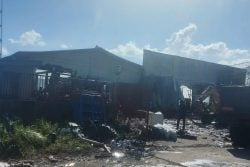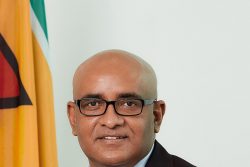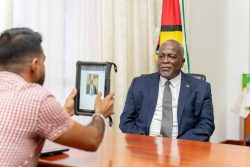SEOUL, (Reuters) – The United States has positioned a warship off the Korean coast as a shield against ballistic missile attack as South Korea’s new president vowed swift retaliation against a North Korean strike amid soaring tensions on the peninsula.
But Washington also said it had seen no worrisome mobilization of armed forces by the North Koreans despite bellicose rhetoric over a ramping up of international sanctions against Pyongyang over nuclear weapons tests.
“If there is any provocation against South Korea and its people, there should be a strong response in initial combat without any political considerations,” South Korean President Park Geun-hye told the defence minister and senior officials.
North Korea says the region is on the brink of a nuclear war in the wake of U.N. sanctions in response to its February nuclear test and a series of joint U.S. and South Korean military drills that have included a rare U.S. show of aerial power.
In Washington, the White House has said the United States takes seriously North Korea’s war threats. But White House spokesman Jay Carney said on Monday: “I would note that despite the harsh rhetoric we are hearing from Pyongyang, we are not seeing changes to the North Korean military posture, such as large-scale mobilizations and positioning of forces.”
North Korea further escalated its rhetoric on Saturday by saying it was entering a “state of war” with South Korea in response to what it termed the “hostile” military drills.
A U.S. defence official said the USS McCain, an Aegis-class guided-missile destroyer used for ballistic missile defense, was being positioned off the peninsula’s southwestern coast.
“This is a prudent move that provides greater missile defense options should (they) become necessary,” said the official, speaking on condition of anonymity. The ship was not expected to participate in any exercises, the official added. South Korea has changed its rules of engagement to allow local units to respond immediately to attacks, rather than waiting for permission from Seoul.
Stung by criticism that its response to the shelling of a South Korean island in 2010 was tardy and weak, Seoul has also threatened to target young North Korean leader Kim Jong-un and to destroy statues of the ruling Kim dynasty in the event of any new attack, a plan that has outraged Pyongyang.
North Korea stepped up its rhetoric in early March, when U.S. and South Korean forces began annual military drills that involved the flights of U.S. B-2 stealth bombers in a practice run, prompting the North to put its missile units on standby to fire at U.S. military bases in South Korea and in the Pacific.
The United States also deployed F-22 stealth fighter jets on Sunday to take part in the drills. The Pentagon said it was the fourth time F-22s had been deployed to South Korea.
Australia, a close U.S. ally and rotating U.N. Security Council member, said it would urge China to help enforce sanctions banning the flow of technology and equipment to North Korea. Australian Prime Minister Julia Gillard, who leaves on Friday for Beijing, plans to call on Chinese leaders to help bolster stop-and-search provisions for shipping to and from North Korea, Foreign Minister Bob Carr said. Canberra also plans its own banking and financial sanctions.
“The immediate priority is to see the sanctions agreed on by the Security Council are properly enforced,” Carr said on Tuesday.
North Korea has cancelled an armistice agreement with the United States that ended the Korean War and has cut all hotlines with U.S. forces, the United Nations and South Korea.
At a recent meeting of North Korea’s ruling Workers Party Central Committee, leader Kim Jong-un rejected the notion that Pyongyang was going to use its nuclear arms development as a bargaining chip for foreign aid for the impoverished nation.
“The nuclear weapons of Songun Korea are not goods for getting U.S. dollars and they are … (not) to be put on the table of negotiations aimed at forcing the (North) to disarm itself,” KCNA news agency quoted him as saying.
Songun is the Korean word for the “Military First” policy preached by Kim’s father who used it to justify the use of the impoverished state’s scarce resources to build a 1.2-million strong army and pursue development of weapons of mass destruction.





